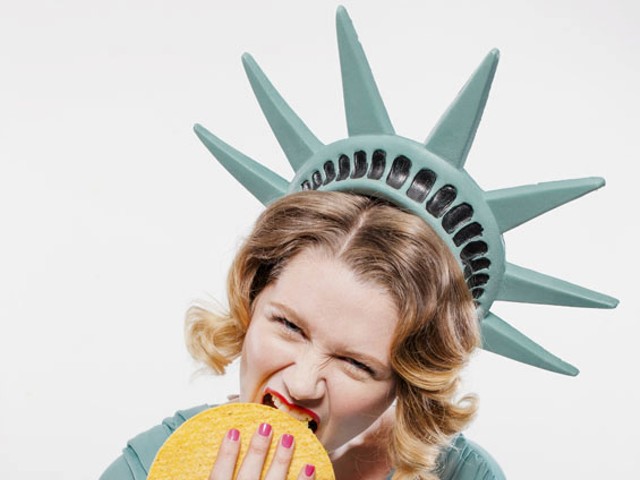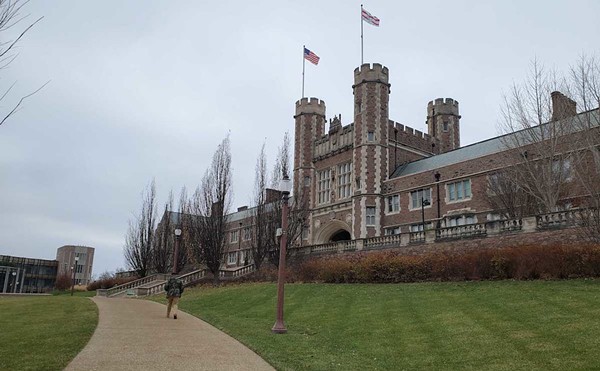I admit it: I know very little about you, St. Louis. I've only driven through you, always getting confused by the network of freeways ringing your beautiful town. But I am familiar with the historical highlights of Mexican food for ustedes, at least in how it influenced the rest of us.
Records show Mexican food was available in St. Louis as early as 1900, with stores selling canned tamales and chile con carne and tamale men of all ethnicities roaming the streets. The 1904 St. Louis World's Fair gave the meals a huge national boost; from here sprang the O.T. Hodge Chile Parlor and other companies that spread the cult of the San Antonio dish so well through the Midwest that most folks nowadays don't realize it's a dish of Mexican extraction.
But the biggest St. Louis Mexican-food success story with national implications is one more familiar to ustedes: Ramón Gallardo, founder of the Casa Gallardo chain. He had moved to St. Louis in 1960, after stints as a dishwasher in Southern California and a chef's assistant in Chicago. The Mexico City native transitioned into managing restaurants before a boss asked him to take over La Sala, one of a handful of Mexican restaurants in St. Louis at the time.
"I didn't know anything about Mexican food," Gallardo told St. Louis Commerce in 1993. "I did some research around town, about what people perceive as Mexican food. I called my family in Mexico for recipes. I made up a new menu, made a few changes, hired a new cook. We made money the first month. The place was packed."
Emboldened by the success, Gallardo ran La Sala for a few more years and then, in 1975, opened his own place. Casa Gallardo's hefty combo plates and watered-down frozen margaritas proved to be a smash. He hadn't even opened a second location before General Mills proposed a multimillion-dollar buyout, which he accepted. Casa Gallardo expanded to more than 30 locations, and Gallardo moved up the General Mills ranks, becoming the Minneapolis-based corporation's primary adviser on expanding into the Mexican-food market, at a time where all the major food companies were trying to out-Mexican each other. It made him one of the most powerful Latinos in business in the United States, and an always irresistible quote: Once, Gallardo found himself in the Santa Barbara Biltmore Hotel — the site of his first job in the United States — addressing General Mills' board of directors. To the audience's delight, Gallardo told them that this was the first time he had ever entered the Biltmore through the front door instead of the back. "I guess the secret to success is knowing how to make a good taco and a good margarita," he cracked. "Is this a great country or what?"
Casa Gallardo went up against two other chains, Southern California-based El Torito and Minnesota's Chi-Chi's, during the late 1970s and early 1980s in the fight for America's Mexican-food obsession. In 1982 Time magazine covered the chains' rise in an article titled "The Enchilada Millionaires," noting that Mexican restaurants had earned $3 billion in revenue the previous year, a 200 percent increase from as recently as 1977, and that "Mexican-food chains are hotter than chili peppers." The piece began by recounting Gallardo's rags-to-riches story, mentioned his conveyance of choice (a silver Mercedes) and even included a photo of the man who now went by "Ray."
That was the height of Casa Gallardo's success. In 1986 El Torito bought out Casa Gallardo, making its formal rival a junior brand; earlier this year Real Mex (El Torito's parent company) closed the last remaining outposts, all in the St. Louis metropolitan area, arguing that no one cared for their style of Mexican food anymore. Gallardo visited the Westport location for one final dinner, only to find it closed. He asked a Real Mex representative if he could at least buy a wooden sign in the restaurant. The rep said Gallardo could have it for free.
Click here to return to Gustavo's feature story, "One Nation, Under Tacos."




